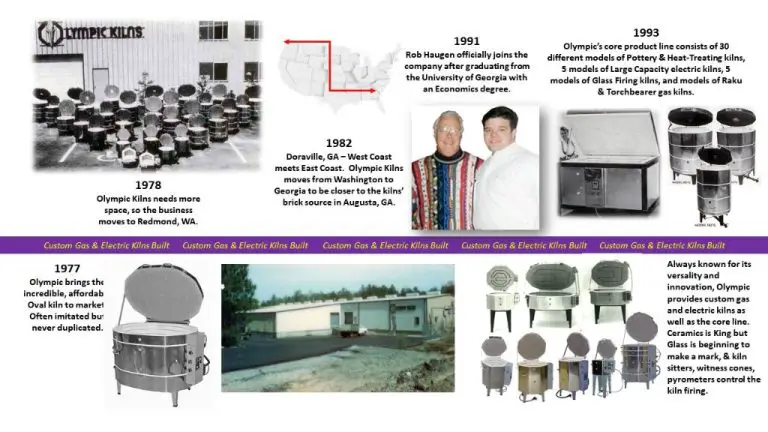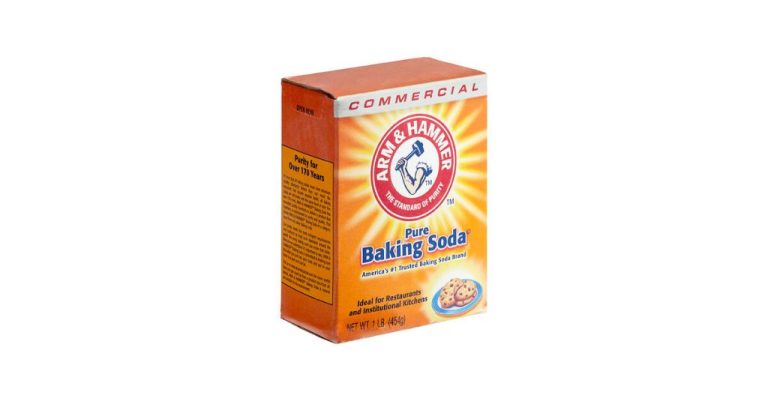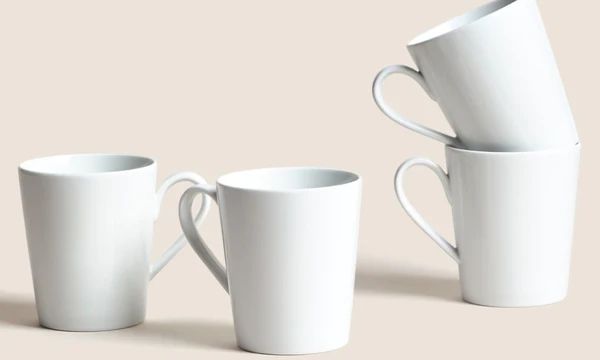Can You Make A Pipe Out Of Ceramic Clay?
Ceramic clay pipes have been used for centuries to smoke tobacco, herbs, and other plant materials. They are made from natural clays that can be molded when wet, but become hard and durable when fired in a kiln. Ceramic pipes have many benefits over traditional wood or metal pipes:
– They do not affect the taste of the smoking material like metals can.
– They can withstand very high temperatures and are less likely to burn or scorch.
– Ceramic glazes create beautifully decorated, food-safe pipes.
– Fired ceramic is durable and long-lasting if cared for properly.
– The porous nature provides a cooler, drier smoke.
Creating your own ceramic smoking pipe at home is an enjoyable and rewarding craft. With some basic materials, tools, and techniques, you can make a fully functional and decorative clay pipe customized to your taste. This guide will walk through the complete process from choosing the right clay to glazing and firing your finished masterpiece.
Types of Ceramic Clays
There are three main types of ceramic clay that can be used to make pipes:
Earthenware
Earthenware is a low-fire clay that is porous when fired. It can be fired at lower temperatures ranging from 1723°F – 2102°F (930°C – 1150°C). Earthenware clays are easy to work with and readily available, making them a good choice for beginners. They come in various colors like red, brown, and white.
Stoneware
Stoneware is a mid-range fire clay that becomes vitrified and non-porous when fired. It can be fired at higher temperatures ranging from 2102°F – 2462°F (1150°C – 1350°C). Stoneware clays are stronger and more durable than earthenware. They come in gray and buff colors.
Porcelain
Porcelain is a high-fire clay that becomes very dense and non-porous when fired at extremely high temperatures over 2462°F (1350°C). It’s the strongest type of ceramic clay and can be thinly made. Porcelain has a bright white color that can be decorated with colorants.
Properties of Ceramic Clay
The properties of ceramic clay determine how it can be shaped and what the final ceramic will be like. The key properties to consider are plasticity, drying and firing range, and porosity.
Plasticity refers to how malleable and workable the clay is. More plastic clays are easier to form into shapes without cracking or slumping. Plasticity depends on factors like the clay’s composition and the amount of water added. Highly plastic clays have enough elasticity to hold their shape while still being malleable.
The drying and firing range determines at what temperatures the clay becomes durable through heating. The clay needs to dry slowly at first to avoid cracking, then can be fired at high temperatures like over 1000°C to permanently harden it into ceramic. The clay’s composition affects its firing range. Porous low-fire clays can be fired at lower temperatures around 1000-1200°C while less porous stonewares require over 1200°C.
Porosity refers to the tiny holes within fired ceramic clay that are left from air bubbles. More porous clays make lighter ceramic because the pores give it a lower density. Porosity also affects qualities like absorbency. Low-porosity stoneware has very little absorption while terra cotta is quite porous and absorbs water. Porosity can be controlled by the clay’s composition and by firing techniques.
Tools and Supplies Needed
There are a few essential tools and supplies you’ll need to make a pipe out of ceramic clay:
Clay – The type of clay is important. Choose a clay formulated for high fire ceramics, such as stoneware or porcelain. These clays can withstand the high temperatures needed to properly cure ceramic pipes.
Mold or wheel – You can hand build your pipe or throw it on a pottery wheel. Molds specifically for pipe making are also available. The mold or wheel will help you shape the pipe’s chamber and stem.
Glazes – Ceramic glazes provide an impervious glass coating to the clay after firing. Use food-safe glazes formulated for high fire ceramics. Glazes allow custom colors and effects.
Kiln – You need a high temperature kiln that can reach over 2,200°F to properly fire and cure ceramic clay. Kilns are essential for the heating and cooling cycle that transforms soft clay into hardened, durable ceramic.
Shaping the Pipe
There are two main techniques for shaping a ceramic pipe – using a mold or throwing it on a pottery wheel.
To use a mold, choose one that is the size and shape you want for your pipe. Apply a thin layer of clay to the inside of the mold, then build up the sides by adding more clay and smoothing it out. Let it set until it holds its shape but is still pliable. Carefully remove it from the mold and trim away any excess clay with a knife or loop tool if needed. Refine the shape by hand as desired.
Pipe making on the pottery wheel requires more skill but allows you to truly customize the shape. Center a ball of clay on the wheel and open up the center with your thumbs to create a thick walled cylinder. Use your fingers and various tools to pull up the sides and shape the pipe bowl area. Create the stem, carb hole, and mouthpiece as you shape it. You may need to re-center the clay several times as you work. Allow it to firm up partially before carefully removing it from the wheel with a wire tool.
Applying Decorations
Once you have shaped your ceramic pipe, you can add decorative colors, textures, and designs before firing it. There are several options for decorating greenware (unfired ceramic):
Glazes
Glazes are mixtures of minerals and metal oxides that melt during firing to create a glassy coating. They come in all colors and finishes like glossy, matte, metallic, chalky, and more. You can brush or pour liquid glazes onto the pipe or dip the entire piece into a bucket of glaze. Keep in mind that bare clay will absorb any glaze color more intensely.
Coloring Oxides
Colored metal oxides can be dusted or washed onto the surface to tint the clay body. Common oxides used include cobalt (blue), copper (green/turquoise), manganese (brown/black), and iron (rusty red). The oxides blend into the outer layer of unfired clay, producing a mottled effect.
Textures
There are many ways to add visual interest through textured techniques. Try carving, impressing objects into the soft clay, or attaching textured materials. Stamped patterns, sgraffito drawings, and rough sponged effects all work well. Just ensure any texturing is done before the pipe dries and hardens too much.
Drying the Pipe
After your clay pipe has been shaped, you’ll need to thoroughly dry it before firing. There are two main methods for drying clay:
Slow Air Drying
Air drying is the most common technique. Place your unfired clay pipe in a warm, dry, dust-free area out of direct sunlight. Avoid drying too quickly, which can cause cracks – drying over several days is ideal. Flip the pipe periodically so it dries evenly. Test for dryness by touching the clay – it should be cool and no longer damp.
Using a Dehydrator
A food dehydrator provides a controlled way to dry unfired clay. The temperature should be set between 95-115°F. Place the pipe on a mesh rack, leaving space between pieces. Drying time can range from 6-48 hours. Check periodically until the clay no longer feels cool or damp. Keep the pipe in the dehydrator until completely dry.
Firing the Pipe
Once the clay pipe is dried, it must be fired in a kiln to harden and strengthen it. Firing is done in two stages – bisque firing and glaze firing. Bisque firing is done at lower temperatures ranging from 1650°F to 1800°F (900°C to 1000°C). At these temperatures, any moistures is completely driven out of the clay and chemical water is removed, causing the clay to become ceramic.
During bisque firing, the pipe will reduce in size slightly as vitrification begins and gases escape. Firing at this stage makes the pipe hard, durable, and ready to accept decorations and glazes. The bisque firing provides an initial hardening of the clay body.
After applying glazes and decorations, the pipe undergoes a second firing at higher temperatures ranging from 2190°F to 2300°F (1200°C to 1260°C). At these temperatures, the glaze will melt and fuse to the clay body to create a smooth, glassy surface. The glaze firing hardens the pipe further and creates an impervious surface that is easy to clean and hygienic for use.
It’s crucial to follow the temperature guidelines for the specific clay and glaze being used. Firing too low can result in weak, porous pieces while overfiring can cause glazes to become undermelted or overly melted and runny.
Finishing Touches
Once the ceramic pipe has been fired, glazed, and completely cooled, it’s time for the finishing touches. This includes polishing and sealing the pipe to make sure it has a smooth, flawless surface and is protected.
Use a very fine grit sandpaper or emery cloth to gently polish the pipe. Rub the sandpaper lightly over any rough patches or flaws in the surface glaze. Be careful not to scrub too hard, as this can scratch the glaze. The goal is to smooth everything out and make the pipe feel velvety.
After polishing, clean the pipe thoroughly to remove any debris. Once dry, apply a food-safe sealant to the inside bowl and mouthpiece. This will protect the bare clay and prevent moisture damage. Let the sealant cure fully before using the pipe.
Check for any tiny cracks or pinholes, and use a modeling clay to fill them in if needed. This will prevent smoke from leaking through. The finishing touches require patience and care, but will result in a gorgeously smooth ceramic pipe ready for use.
Using and Caring for Ceramic Pipes
Once your ceramic pipe has been completed and fired, you’ll want to properly break it in before regular use. When smoking from a new ceramic pipe for the first time, start with smaller, shorter smoking sessions to allow the pipe to cure and build up resin slowly. This helps prevent cracking or damage from happening too quickly.
For the first few uses, limit your smoking sessions to 5-10 minutes at a time. Over several uses, gradually increase to longer sessions as the pipe walls build up residue and become seasoned. Avoid extremely long sessions at first though, even if tempted to keep enjoying your creation!
In terms of cleaning and maintenance, ceramic pipes are very durable but can be susceptible to cracks if handled roughly. Gently clean out excess ash and resin buildup with pipe cleaners after each use. For deeper cleaning, carefully use a bottle brush with warm water and mild soap – avoid abrasive cleaners. Rinse thoroughly after cleaning. Allow the pipe to fully air dry before next use.
Check periodically for any hairline cracks forming – stop using immediately if any appear and discard or recycle the pipe if cracks won’t seal. With proper care though, a handmade ceramic pipe will provide many years of enjoyable use!




